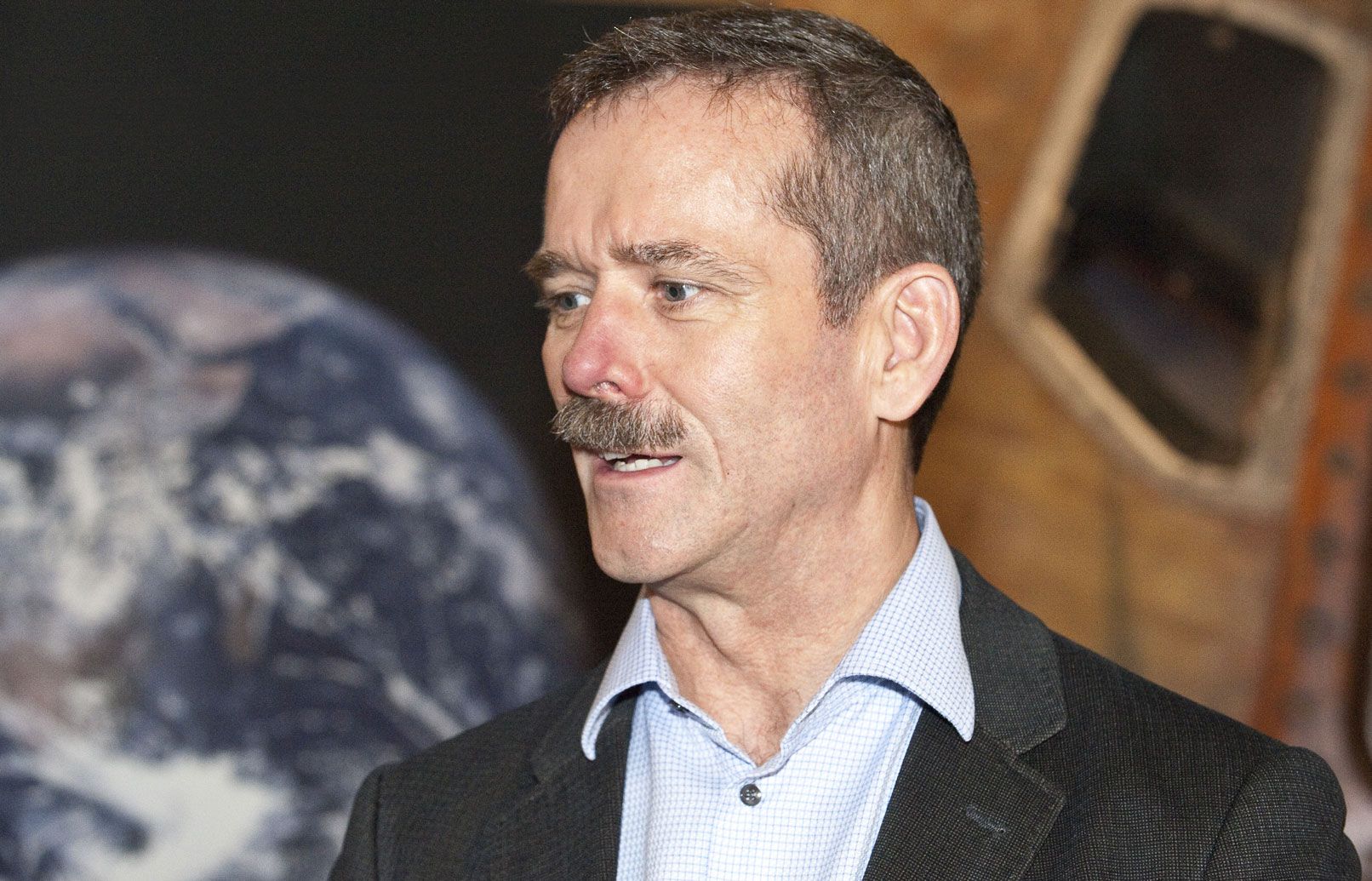Safely back on Earth after living aboard the International Space Station (ISS), Canadian astronaut Chris Hadfield visited the Science Museum just before Christmas to share some of the extraordinary stories from his new book, An Astronaut’s Guide to Life on Earth.
First selected as an astronaut in 1992, Chris has since served as CAPCOM for 25 Shuttle launches, Director of NASA Operations in Star City, Russia and as Chief of ISS Operations. Chris first flew into space in 1995, before returning in 2001 to help install Canadarm2 on the ISS. His final mission as an astronaut began in December 2012, culminating with his role as Commander of ISS Expedition 35.
During a tour of the Exploring Space gallery with Curator Doug Millard I asked what it felt like being an astronaut on board the ISS, ‘You are a representative of so many people’s hopes and dreams,’ Chris told me. ‘To be on board the ISS for five months is a gift of time.’

After pausing for photographs in front of the original Apollo 10 Command Module – which carried Tom Stafford, John Young and Gene Cernan back from the Moon in 1969 – the conversation turned to the future of space exploration. ‘The International Space Station currently is an extension of our self-awareness beyond Earth. One small step away from our own planet. The next logical step is to go the Moon. I am really hoping that within my lifetime we will start living on the Moon,’ explained Hadfield.

Arriving at the IMAX theatre, Chris shared stories from his new book and answered questions from the 400-strong audience about life as an astronaut, ‘My son sent me an email saying Mount Etna was erupting, so just like a dad on vacation I took a picture of Mount Etna.’
Some questions needed only a short answer, ‘Did I have a party when I can back to earth? Yes, several’ joked Chris. But others, such as describing a space walk, needed more explanation.
‘There’s a textured depth of darkness like you’ve never seen. You are assaulted by the visual onslaught of this new place. I was stunned by the unexpected power of what was pouring in through my eyeballs’ explained Chris. ‘It would have been rude not to stop and look.’
Chris went on to describe how it felt with such a huge visual impact but no sound, ‘It’s like standing next to a waterfall and it being deadly silent.’
‘A spacewalk is one of the most powerful reminders of how alone you are. You are truly alone in the universe.’
Questions turned to what you do on the ISS in your spare time, ‘I wrote a whole album while up in space,’ answered Chris. He went on to discuss the human need to understand life through art, – from cave paintings in France to his own experiences recording the now famous Space Oddity video.
Many questions focused on our fascination with space and exploration. Chris said, ‘Space travel is nothing new. It’s a pattern we have been following for the last 70,000 years. There is a human necessity to leave home. That’s how we have spread across the whole planet. Each generation wants to see what’s beyond the horizon.’
The afternoon ended with questions about life as an astronaut. ‘Most of my time as an astronaut has been living on earth,’ explained Chris. ‘What you do in space may be entertaining, but it’s really not what matters. It’s life on earth that’s important.’
Did you join us for the book signing? Tell us more in the comments below.